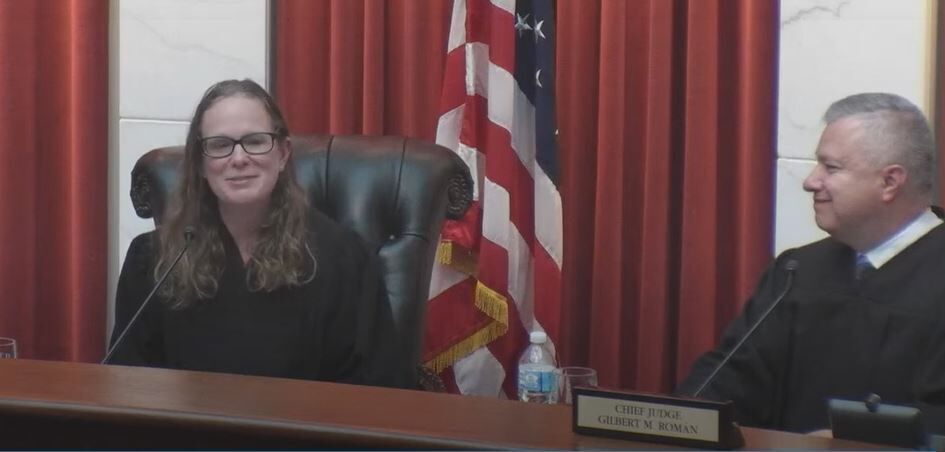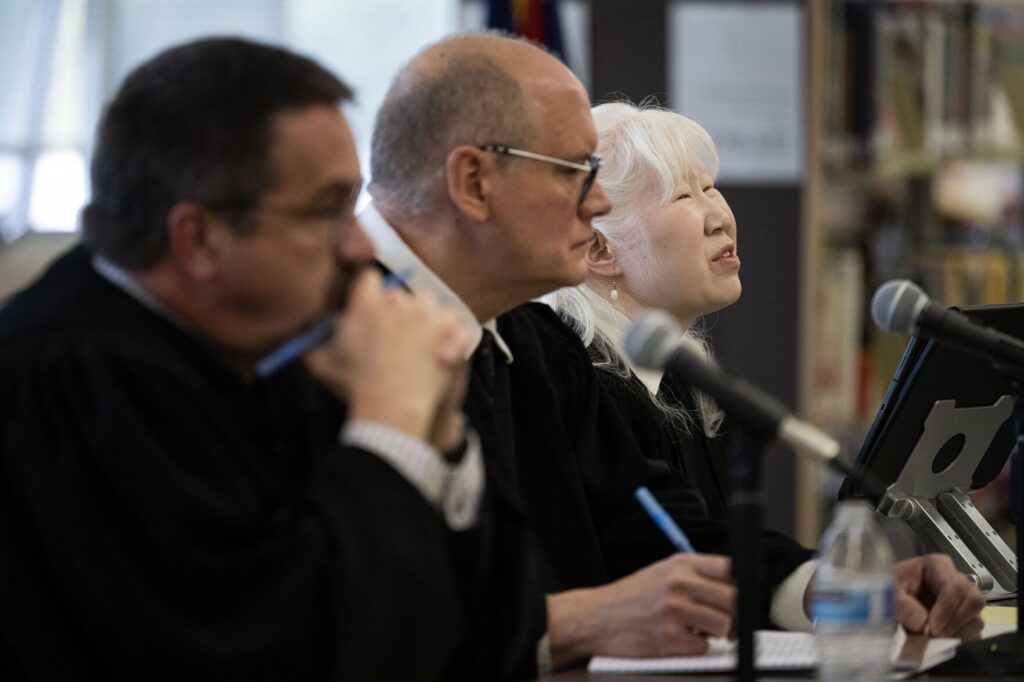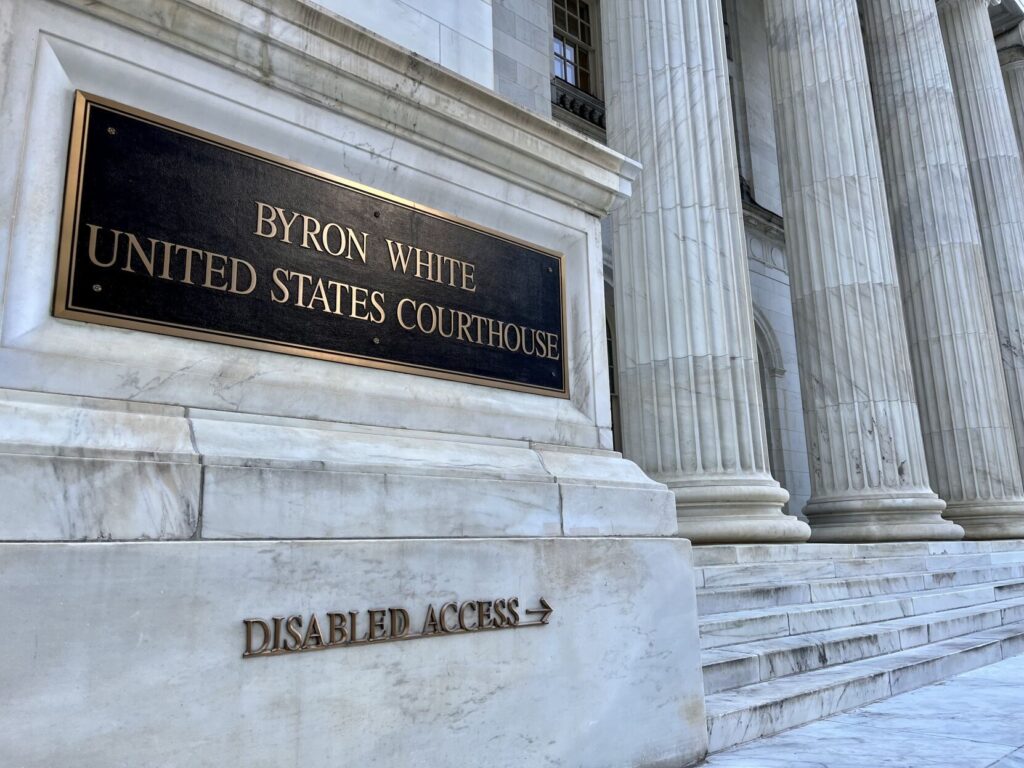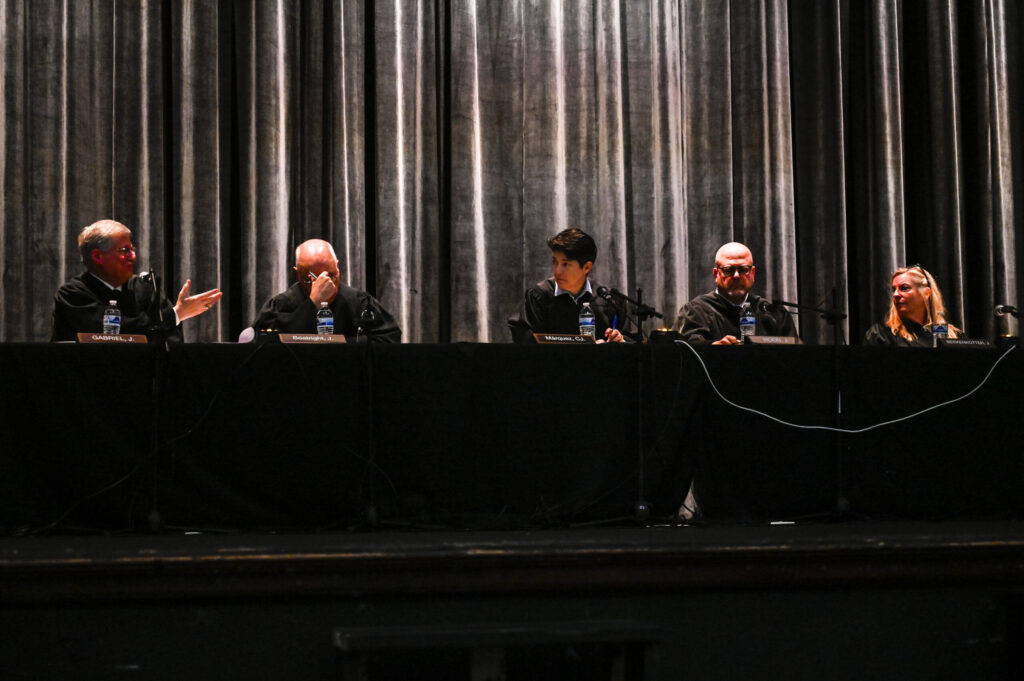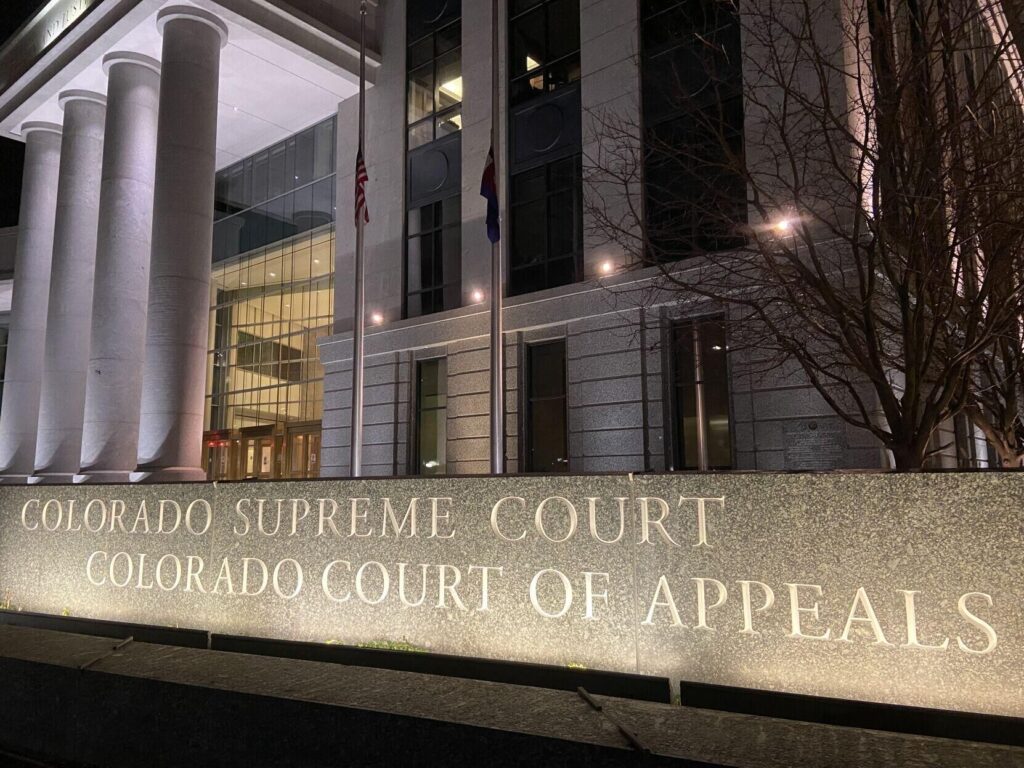Defendants may claim harassment in self-defense, state Supreme Court rules

People may assert that they committed harassment in self-defense, the Colorado Supreme Court ruled on Monday, finding that an Arapahoe County judge mistakenly failed to instruct a jury that they could acquit a tow truck driver if they believed he punched another motorist to defend himself.
Under state law, the crime of harassment involves striking a person with an intent to harass, annoy or alarm. By a 6-1 decision, the justices indicated there was evidence to suggest that Thomas Pearson hit Timothy O’Kelly only to alarm him into backing down, which could qualify as self-defense.
“So, can a person intend to alarm someone in self-defense? At first blush, the concept seems implausible, if not downright nonsensical,” wrote Justice Maria E. Berkenkotter for the court’s majority. “However, upon closer examination, we cannot conclude that the two concepts are always, in every circumstance, mutually exclusive.”
The road rage encounter between the two men happened on June 1, 2017, while Pearson was performing roadside assistance as a tow truck driver along Interstate 225. O’Kelly merged in front of Pearson, and the two men’s stories differed about what happened next and who threw the first punch.
O’Kelly claimed he merged with sufficient room, but that Pearson honked at him. O’Kelly displayed his middle finger, causing Pearson to tailgate him and throw a metal object into O’Kelly’s car. O’Kelly stopped to take a picture of Pearson’s vehicle in order to make a complaint. Pearson got out and began to walk towards Kelly, prompting Kelly to get out. After yelling at each other, Pearson hit O’Kelly first.
In Pearson’s telling, O’Kelly cut him off. Pearson honked and O’Kelly showed his middle finger, after which Pearson threw an air freshener towards O’Kelly’s car. O’Kelly parked and exited his car first. After Pearson parked and got out, O’Kelly struck Pearson, causing Pearson to punch O’Kelly once in the face.
Pearson wanted to defend against the harassment charge by employing an affirmative defense, meaning a justification for his actions that prosecutors would have to disprove beyond a reasonable doubt.
In his view, he was justified in striking O’Kelly with less than full force because he wanted to alarm O’Kelly to the point of backing down.
“Mr. Pearson was a very large man,” public defender Andrew P. Castle told the justices during oral arguments. “The restraint that he showed and the amount of force that he used – I think a jury could find that was done with the intent to the alarm. A sort of shock to the system to say, ‘Hey, do not hit me again’.”
County Court Judge Anne Ollada found it “doesn’t compute” for someone to argue they harassed another person in self-defense.
“He has to either be trying to harass, annoy, or alarm. If he’s not because he is defending himself,” it is no longer harassment, she said, declining to give a self-defense instruction to the jury.
Jurors ultimately convicted Pearson of harassment. At the same time, they acquitted Pearson of assault. Because the jury had actually received an instruction for self-defense on the assault charge, Pearson believed it was possible they would also have acquitted him had jurors been told about self-defense for harassment.
Like Ollada, prosecutors doubted it was possible to intend to alarm someone while also intending to defend oneself, and instead painted Pearson as the aggressor.
The Supreme Court’s majority sided with Pearson’s logic.
Berkenkotter noted that someone may fire a warning shot into the air to alarm an aggressor, while at the same time intending to protect themselves. By denying him a jury instruction on self-defense, the trial judge forced Pearson to argue that he did not intend to alarm O’Kelly and therefore did not commit harassment. That made it harder to reconcile Pearson’s admission on the witness stand that he punched O’Kelly “to make sure [O’Kelly] didn’t try to push [him] again.”
“Pearson presented some credible evidence to allow a reasonable jury to find that he struck O’Kelly in the face with the intent to alarm and that he was justified in using such force, which he claimed to have tempered in self-defense,” Berkenkotter wrote.
Chief Justice Brian D. Boatright disagreed that Pearson had intended to alarm O’Kelly. In Boatright’s view, Pearson’s defense at trial was correct to focus on the fact that he did not commit harassment because he had not demonstrated the necessary intent.
“Sure, by punching O’Kelly in the face, he may have, in fact, alarmed O’Kelly,” Boatright wrote, “but that was not his goal. Frankly, I believe that Pearson did not care what emotion O’Kelly felt when he was punched, so long as O’Kelly stopped his alleged attack.”
The case is Pearson v. People.






